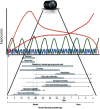Developing the Regulatory Utility of the Exposome: Mapping Exposures for Risk Assessment through Lifestage Exposome Snapshots (LEnS)
- PMID: 28796633
- PMCID: PMC5783662
- DOI: 10.1289/EHP1250
Developing the Regulatory Utility of the Exposome: Mapping Exposures for Risk Assessment through Lifestage Exposome Snapshots (LEnS)
Abstract
Background: Exposome-related efforts aim to document the totality of human exposures across the lifecourse. This field has advanced rapidly in recent years but lacks practical application to risk assessment, particularly for children's health.
Objectives: Our objective was to apply the exposome to children's health risk assessment by introducing the concept of Lifestage Exposome Snapshots (LEnS). Case studies are presented to illustrate the value of the framework.
Discussion: The LEnS framework encourages organization of exposome studies based on windows of susceptibility for particular target organ systems. Such analyses will provide information regarding cumulative impacts during specific critical periods of the life course. A logical extension of this framework is that regulatory standards should analyze exposure information by target organ, rather than for a single chemical only or multiple chemicals grouped solely by mechanism of action.
Conclusions: The LEnS concept is a practical refinement to the exposome that accounts for total exposures during particular windows of susceptibility in target organ systems. Application of the LEnS framework in risk assessment and regulation will improve protection of children's health by enhancing protection of sensitive developing organ systems that are critical for lifelong health and well-being. https://doi.org/10.1289/EHP1250.
Figures




Similar articles
-
Adopting a child perspective for exposome research on mental health and cognitive development - Conceptualisation and opportunities.Environ Res. 2023 Dec 15;239(Pt 1):117279. doi: 10.1016/j.envres.2023.117279. Epub 2023 Sep 29. Environ Res. 2023. PMID: 37778607
-
The Importance of the Biological Impact of Exposure to the Concept of the Exposome.Environ Health Perspect. 2016 Oct;124(10):1504-1510. doi: 10.1289/EHP140. Epub 2016 Jun 3. Environ Health Perspect. 2016. PMID: 27258438 Free PMC article. Review.
-
A lifestage-specific approach to hazard and dose-response characterization for children's health risk assessment.Birth Defects Res B Dev Reprod Toxicol. 2008 Dec;83(6):530-46. doi: 10.1002/bdrb.20176. Birth Defects Res B Dev Reprod Toxicol. 2008. PMID: 19085945 Review.
-
Chemical exposome and children health: Identification of dose-response relationships from meta-analyses and epidemiological studies.Environ Res. 2024 Dec 1;262(Pt 1):119811. doi: 10.1016/j.envres.2024.119811. Epub 2024 Aug 17. Environ Res. 2024. PMID: 39159775 Review.
-
Minimally Invasive Biospecimen Collection for Exposome Research in Children's Health.Curr Environ Health Rep. 2020 Sep;7(3):198-210. doi: 10.1007/s40572-020-00277-2. Curr Environ Health Rep. 2020. PMID: 32535858 Free PMC article. Review.
Cited by
-
Toxic Substances Control Act (TSCA) Implementation: How the Amended Law Has Failed to Protect Vulnerable Populations from Toxic Chemicals in the United States.Environ Sci Technol. 2022 Sep 6;56(17):11969-11982. doi: 10.1021/acs.est.2c02079. Epub 2022 Aug 18. Environ Sci Technol. 2022. PMID: 35980084 Free PMC article.
-
Lagging and Flagging: Air Pollution, Shale Gas Exploration and the Interaction of Policy, Science, Ethics and Environmental Justice in England.Int J Environ Res Public Health. 2020 Jun 17;17(12):4320. doi: 10.3390/ijerph17124320. Int J Environ Res Public Health. 2020. PMID: 32560334 Free PMC article.
-
Longitudinal, Seasonal, and Occupational Trends of Multiple Pesticides in House Dust.Environ Health Perspect. 2019 Jan;127(1):17003. doi: 10.1289/EHP3644. Environ Health Perspect. 2019. PMID: 30624099 Free PMC article.
-
Evaluation of the relationship between residential orchard density and dimethyl organophosphate pesticide residues in house dust.J Expo Sci Environ Epidemiol. 2019 Apr;29(3):379-388. doi: 10.1038/s41370-018-0074-5. J Expo Sci Environ Epidemiol. 2019. PMID: 30254255 Free PMC article.
-
Human Exposure to Pesticides in Dust from Two Agricultural Sites in South Africa.Toxics. 2022 Oct 21;10(10):629. doi: 10.3390/toxics10100629. Toxics. 2022. PMID: 36287909 Free PMC article.
References
-
- Barone S Jr, Das KP, Lassiter TL, White LD. 2000. Vulnerable processes of nervous system development: a review of markers and methods. Neurotoxicology 21(1-2):15–36, PMID: 10794382. - PubMed
Publication types
MeSH terms
Substances
Grants and funding
LinkOut - more resources
Full Text Sources
Other Literature Sources
Medical

